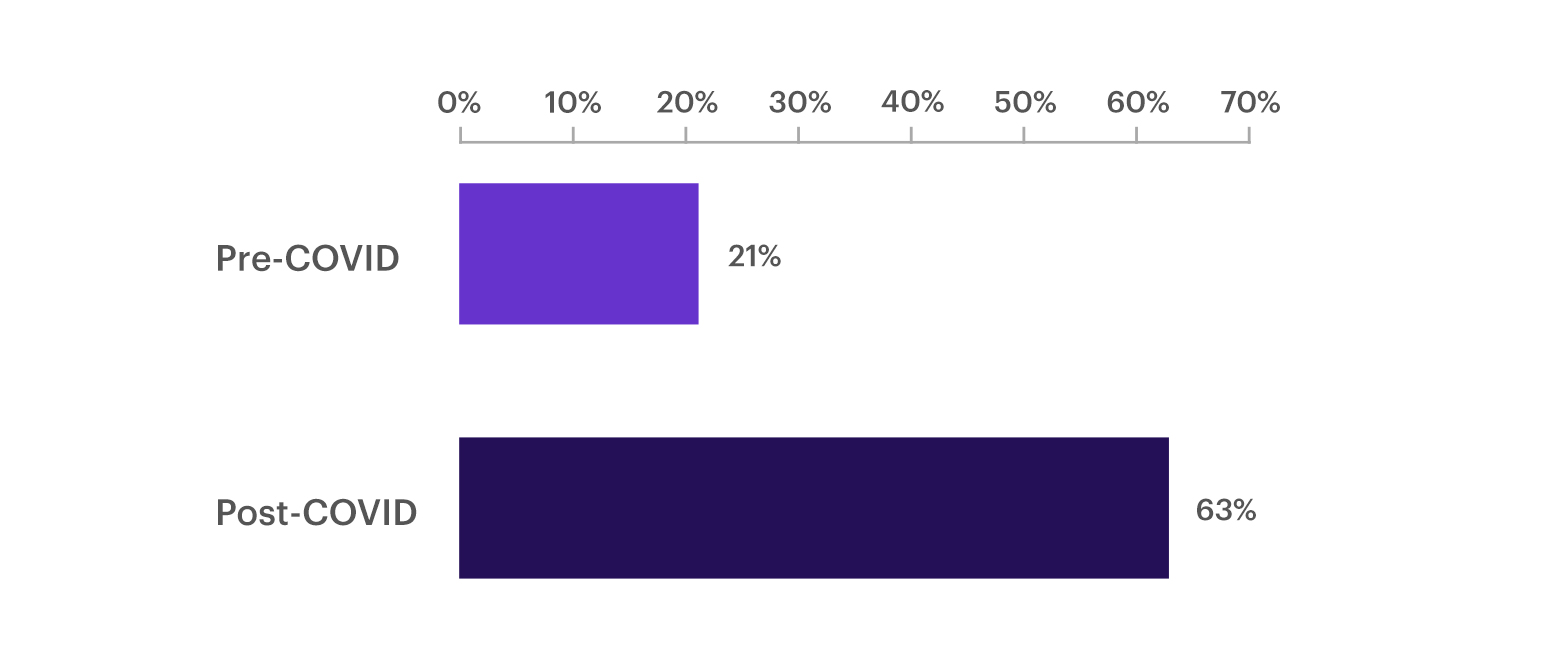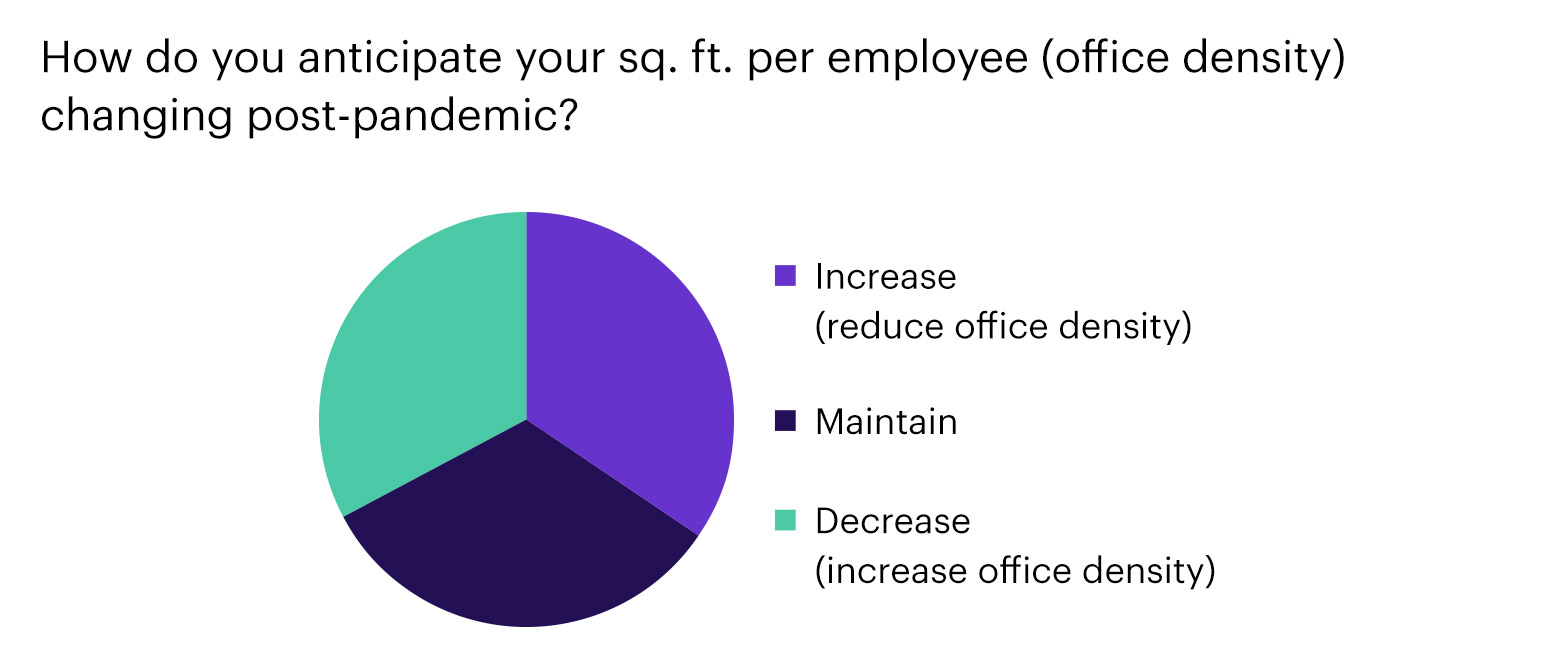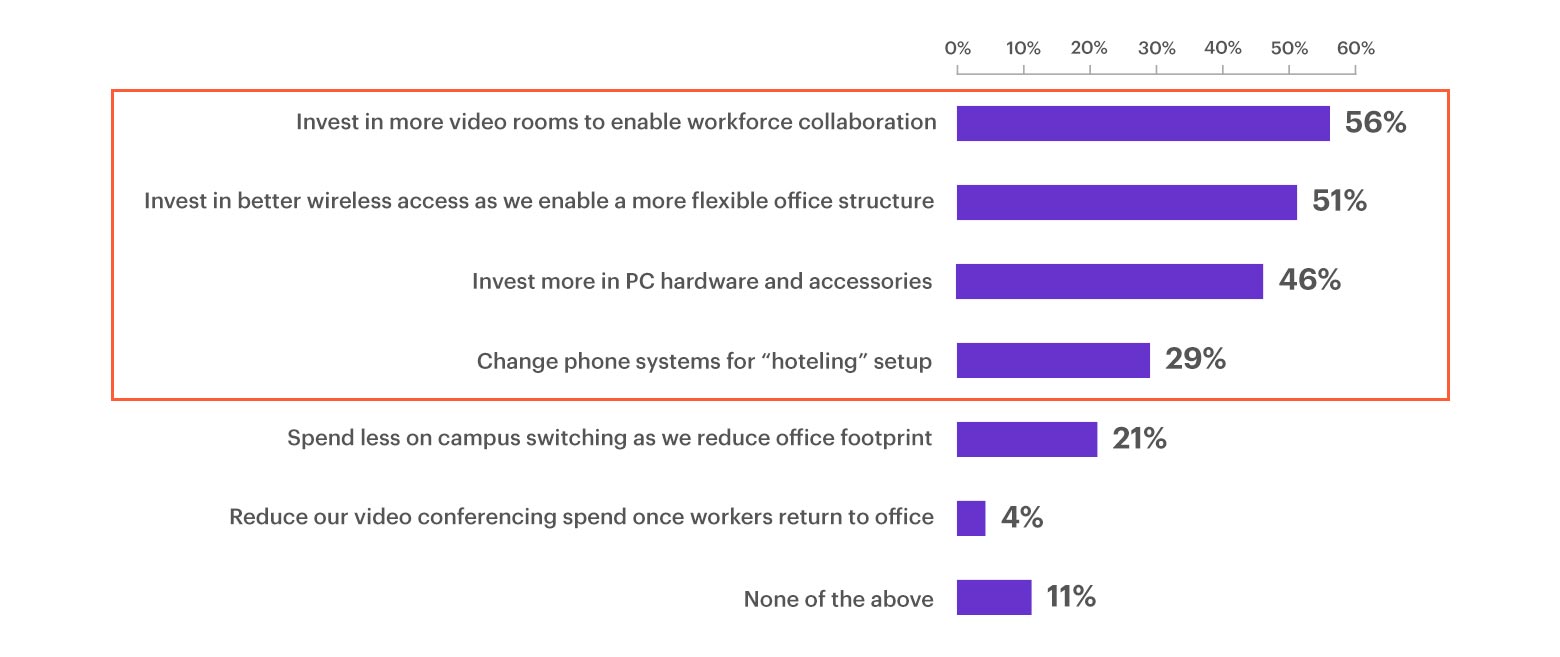What the future of work means for office REITs
Insights from Morgan Stanley Research
06/30/21Summary: After more than a year of remote work, employers are developing their post-pandemic office environment. According to recent Morgan Stanley research, most companies plan to adopt a hybrid work strategy. We dig into what this may mean for those eyeing real estate investment opportunities.
The post-pandemic return to normalcy has been anything but normal for corporations. As employers try to finalize their return to office plans, many employees are demanding a more flexible work environment—now and in the future.
These two factors create competing narratives in the real estate market. One story has employers investing in retrofitted office spaces with more space per employee, but slowing their technology investments. The counternarrative has employers downsizing office spaces while continuing to invest in networking technology both in-office and at home.
Traditionally, real estate investment trusts (REITs) provide investors with consistent, relatively high dividends as a way to diversify into real estate assets without owning physical property. While REITs can play a key role in a diversified portfolio, they require a fair share of research before making an investment, especially during this period of transformation in the office real estate market.
The outlook for office space
With many companies eager to get workers back in the office, employers are looking to provide redesigned office spaces. That would seem to be good for office landlords and commercial REITs, companies that own and often operate income-producing real estate on behalf of investor groups.
A natural implication of less employees in offices, so the narrative goes, is that companies would pull back on their office networking and IT hardware investments and double down on remote networking and communications.
But new data supports the counternarrative: The majority of corporate employers will embrace a hybrid work strategy, reducing their office footprint while continuing to invest in technology. In March, Morgan Stanley teamed up with AlphaWise—the proprietary survey and data arm of Morgan Stanley Research— to survey 100 US corporations across a range of revenue levels and industries on their post-Covid workplace plans. The survey found that almost three out of four surveyed employers plan to reduce their footprint by 20%. Further, about a quarter of office-using employees plan to work from home three days a week— a more than a five-fold increase from before the pandemic.
25% of workforce WFH 3+ days per week

Source: AlphaWise, Morgan Stanley Research
Another key to the story is office density, or the number of employees in the office in a single workday. One of the most surprising findings from the survey: Employers are evenly split on office density. One third plan to increase square foot per employee, one third plan to maintain it, and one third plan to decrease it.
Employer responses suggest that office density will likely remain the same post-pandemic

Souce: AlphaWise, Morgan Stanley Research
This new hybrid model could require additional IT hardware and networking investments as companies look to equip their offices for a range of flexible work styles. About half of respondents expect to increase investments in wireless accessibility, video rooms, and PC hardware and accessories.
Top in-office investment priorities include: video rooms, wireless access, and PC hardware and accessories

Source: AlphaWise Return of Office Survey, Morgan Stanley Research
What does this all mean for investors? Employer’s dedication to investing in in-office technology signals they future-proofing offices for a range of return-to-work styles. That said, office landlords and commercial REITs could face headwinds in the form of higher vacancy, more competition, and lower rents in the current environment.
Key considerations when investing in REITs
Given the current environment, selectivity is key when exploring REITs. REITs can still provide certain advantages over investing in real estate itself. First of all, the investment is liquid. Investors can buy and sell shares of REITs, which trade like stocks on an exchange. Shares of REITs have low investment minimums, too, especially compared to directly investing in an actual property. REITs are also viewed as an uncorrelated asset to stocks and bonds, and a solid way to generate cash flow.
So how can investor judge a potential REIT investment? Earnings growth is a strong sign, especially when it stems from higher occupancy rates and increasing rents, lower costs, and new business opportunities. Just as an investor might research the management team overseeing a mutual fund, the same is true for REITs. A good management team will have the ability to upgrade the facilities and enhance the services of an underutilized building, increasing demand.
Bottom line: Investors looking at REITs may encounter some promising prospects, but they should make sure to look under the hood before going all in.
The source of this article, A New Workplace Creates Two Cycles—Office, Shorter & Lower; Tech Longer & Higher, was originally published on April 15, 2021.
How can E*TRADE help?
Thematic Investing
Find ETFs that align with your values or with social, economic, and technology trends.
Choice Funds
Choose from a list of exchange-traded funds or mutual funds selected by Morgan Stanley Smith Barney LLC.
Brokerage account
Investing and trading account
Buy and sell stocks, ETFs, mutual funds, options, bonds, and more.